Life on planet Earth began only thanks to plants. A wide variety of plants grow and live only to create life. With their leaves, they cover the surface of the soil from the merciless rays of the sun, thanks to them compost appears on the soil surface, the soil is enriched with nutrients. The root system of plants does not allow the soil to be washed out, and their remains serve as food for microbes and worms, thanks to which nitrogen appears in the soil. It was only thanks to plants that soil appeared. Planet Earth would die in a short time if all plants disappeared at once. Experienced farmers try to give more to the soil than to take from it, while plants are, of course, considered their main helpers. In order to make the soil composition better, saturate it with useful substances and improve the structure, farmers resort to the help of plants such as green manure.
Content
Siderata - what is it?
Green manure is a green fertilizer that is grown specifically to normalize the condition of the soil. After the growing season, such plants saturate the soil with nitrogen, as well as nutrients and help in the fight against weeds. From the Latin language, the word "sidera" is translated as "a star receiving power from the sky." Sideration plays a very important role in organic farming.
Siderites include plants that are fast growing. After the green manure is mowed, they are either left on the surface of the soil or embedded in it, and the roots remaining in the soil after rotting will saturate the soil and subsoil with nutrients. Such plants are able to drown out weeds with their green mass and also protect the soil surface from the scorching rays of the sun. And also a rather powerful root system of such plants contributes to the fact that the weed cannot eat normally. Also, the roots make the soil looser, and when they rot, they improve its ability to pass and absorb water, and also have a positive effect on aeration.
So, often as siderates grow leguminous plants that are annuals (less often perennials are used), which have a very powerful aboveground part and phytosanitary properties. And also the best options for the garden will be cereals, characterized by their rapid growth and cold resistance.As well as early green manures, plants belonging to the Asteraceae or Cruciferous family are very popular.
When to sow green manure
Spring sowing
You can sow green manure throughout the season, but most often this is done before the main crop is planted or after it has been removed. But which of the siderates are suitable for spring sowing? Plants such as mustard and phacelia require early planting. They are frost-resistant and begin to grow after the outside temperature stops dropping below freezing. Even early in spring, you can sow spring rapeseed and rape, while it is recommended to plant vetch in the area that is allocated for tomatoes and peppers. Such plants, after the need arises, to plant the main crop, will need to be removed. And in this case, there are several options:
- The easiest, but less effective way is to dig the site together with the green manure. After that, the main crop is planted on the site.
- For this method, you need a flat cutter. With the help of it, it is necessary to cut plants a few centimeters by burying the plane cutter into the ground. Then the main crop is planted in this place, and the remaining cut green mass is used as mulch. The stems begin to rot and become fertilizer over time. But here it must be borne in mind that after cutting the phacelia no longer grows, but the mustard does not stop growing.
- The third method is the most labor-consuming. Vegetable crops are planted on the site where green manure grows. So, these plants are grown together with green manure for 2 or 3 weeks. After that, the "green fertilizer" must be cut with scissors, while the remaining stem should be about 5 centimeters high. The cut green mass must be spread out in the same area over the soil surface. After the plants grow back, they are again pruned to the same height. And so this procedure should be repeated until the time of harvest.
Summer cultivation
This method is considered the best for improving the soil if no vegetable crops will be grown on it in a given year. Sowing is carried out in spring, and at the same time, such siderates are chosen that grow back quickly enough after they are mowed. During the summer period, siderates are systematically mowed, while it is recommended to do this before budding begins. The fact is that the largest number of useful substances is in young shoots, and they also rot very quickly. After the grass is mowed, it is not removed from the site.
Planting green manure in autumn
It is recommended to sow rye in autumn, as well as mustard. Sowing of these plants is carried out after the vegetable crops are removed from the site and, as a rule, this time falls at the end of the summer beginning of the autumn period. The growth of mustard does not stop until the very winter frosts, and its green is covered with snow. In the spring, it is necessary to cut the mustard with a flat cutter, and the main vegetable crop should be planted on top of the remaining tops. In autumn, it is necessary to harvest rye even before the spikelets appear. To do this, it must be chopped up along the tillering node, located at the very surface of the soil. The green mass can be left on the surface of the soil or put in compost.
Crops of green manure are divided into:
- independent - only green manures are grown on the site;
- compacted - when both "green fertilizers" and vegetable crops grow;
- rocker- when "green fertilizers" are sown in separate areas or on paths and aisles.
When to bury (plow in) green manure
Experts say that plowing "green fertilizer" allows you to make the soil structure much better, as well as to avoid compaction of the arable layer.The green manure also contributes to the improvement of water permeability and moisture capacity. All this contributes to the activation of microbiological processes. It is recommended to bury or plow the "green fertilizer" 7-14 days before the main crop is planted. At the same time, one should not forget that the siderates must be mowed or cut off before the budding period begins. But those who have applied this method in practice, believe that as a result of digging or plowing green manure, microorganisms that plants need disappear, and this also leads to a violation of the soil structure. They advise to cut off the "green fertilizer" with a flat cutter, going 5 centimeters deep into the soil, and the cut shoots must be evenly placed over the surface of the garden bed and covered with mulch on top in order to avoid drying out. The cut off tops of the green manure over time become compost, with the release of a large amount of nitrogen. The root system, which remains in the soil, gradually decomposes due to microorganisms and earthworms, resulting in the formation of humus. It is especially not recommended to plow winter green manures, as in this case about 80 percent of green manure impact is lost. After cutting or beveling the "green fertilizer", it is laid out on the soil surface in winter. In spring, the snow will melt, and you will not see these plants on the site, but the soil will be very loose.


Watch this video on YouTube
Siderata plants, names with photos
Best green manure
If you are looking for a universal green manure plant that could be used on any site and for all crops, then you are unlikely to find this. Not a single specialist can name this siderat. Any plant needs a certain green manure. Moreover, each of the siderates has its own special purpose. In this regard, it is simply impossible to single out the best among them. For example, oil radish, rye, lupine, oats, and also phacelia are considered the best "green fertilizers" for soil. For strawberries, it is recommended to choose rapeseed, buckwheat, oil radish and mustard. For sowing before winter, rape, oats, and also winter vetch, rye and rapeseed are most often used. In this regard, it is worth getting to know each group of green manure plants better.
Legumes
These include clover, alfalfa, lentils, peas, seradella, lupine, sweet clover, vetch, cobberry, soybeans, chickpeas and beans. The most popular are:
- Lupine. It promotes the accumulation of nitrogen in the soil. In the place where this green manure grew, you can plant any crop that needs nitrogen. Sowing is carried out in the last days of July and until mid-August, after the harvest of potatoes or cabbage is harvested. However, the best time for sowing is spring.
- Donnik. This legume is an annual. It is recommended to plant it on neutral soil at the very beginning of spring. However, it is suitable for sowing both in summer and autumn.
Cruciferous
These include oil radish, rape, mustard and rapeseed. The most popular are:
- White mustard. Especially important for crop rotation. Special organic acids are released from the root system of this plant. They interact with the soil, resulting in the release of sparingly soluble phosphates. They are also an excellent source of potassium and contribute to the fact that nutrients that are poorly assimilated by plants become easily assimilated.
- Oil radish. This annual promotes nitrogen binding. It also contributes to the fact that the soil is cleared of nematodes, as well as other pathogens. As a rule, it is planted together with vetch or other legumes.
Cereals
These include oats, rye, wheat, and barley.
Buckwheat
Only one representative is buckwheat. It is a fast-growing plant with a very large root system, sometimes up to 150 centimeters in size. This plant promotes deep loosening of the soil and a decrease in its acidity. It also contributes to the enrichment of poor soil with potassium, phosphorus and organic matter.
Astral or Compositae
Representatives are sunflower and calendula. The sunflower has a large root system that reaches two meters in length. This plant gives a lot of green mass, and it is not demanding on the soil.
Amaranth
The only representative is amaranth.
Hydrophiles
These include the phacelia, which is a member of the aquifolia family, and a valuable honey plant. The plant is fast-growing, it has developed root systems, and also grows a large amount of green mass. Not demanding on light and ground, and also cold-resistant. Improves soil structure and increases breathability.
Winter green manure
In spring time, siderates are sown in furrows, and in autumn, they are simply scattered over the soil surface, and mulch is laid on top of them. If desired, they can also be sown in special grooves in the fall, but at the same time, the seeds should be sealed no deeper than 3-4 centimeters. The most popular are such winter siderates as oats and rye.
- Rye. It inhibits the growth of weeds, contributes to the death of pathogens of fungal diseases, as well as nematodes. The rye root system helps to loosen the soil. This green manure is recommended for use in areas where tomatoes, zucchini, potatoes, pumpkin, and also cucumbers will subsequently grow. But it is difficult to cut it off with a flat cutter. In this regard, it is recommended to cut it off above the surface, and dig up the soil with the remaining roots.
- Oats... Promotes loosening of clay soil, while destroying pathogens of root rot. As a rule, it is planted together with vetch. This green manure is recommended to be planted in front of cucumbers.
There are also several plants that are used more and more often as green manure every year:
- Rape. Helps protect soil from diseases and harmful insects. Saturates the soil with sulfur and phosphorus, and also helps to inhibit the growth of weeds. Recommended to be planted before peppers, eggplants and tomatoes. The sowing deadline is August. At the same time, wet clay and waterlogged soil is not suitable for sowing.
- Vika. Enriches the soil with nitrogen. Sowing is carried out in the first autumn month, while any seedlings can be planted in the area where it grew in spring.
- Rapeseed. Improves soil structure. After it, it is recommended to plant potatoes, cereals or corn. Sowing is carried out in August.
Siderata for potatoes
If potatoes are planted in the same place every year, then the soil can be quickly depleted. When the crop is harvested, peas, oats, and white mustard must be sown on the site to restore the soil. Leave the green manure in the winter. In spring, the grown "green fertilizer" must be cut off, while the flat cutter is buried 5–7 centimeters into the soil. Early potatoes can be planted after 7-14 days. In spring, you can sow oats, phacelia and white mustard at the same time, but only if you have not sown green manure in the area since autumn. Already a few weeks after sowing, these green manures are cut with a flat cutter before planting potatoes. This usually occurs in mid-May. When the crop is harvested, "green fertilizer" is sown again.
Important Tips
- do not plant the main crop and green manure in the same area when they are related to the same family;
- it is very important - timely cutting of green manure, their shoots should not become woody, and seeds should not be allowed to ripen,as this leads to uncontrolled growth in the area of "green fertilizer";
- when sowing, take into account the laws of crop rotation, so, do not sow the same green manure in one area every year;
- remember that there are green manures that need nutrient soil, and there are those that grow on poor soil.

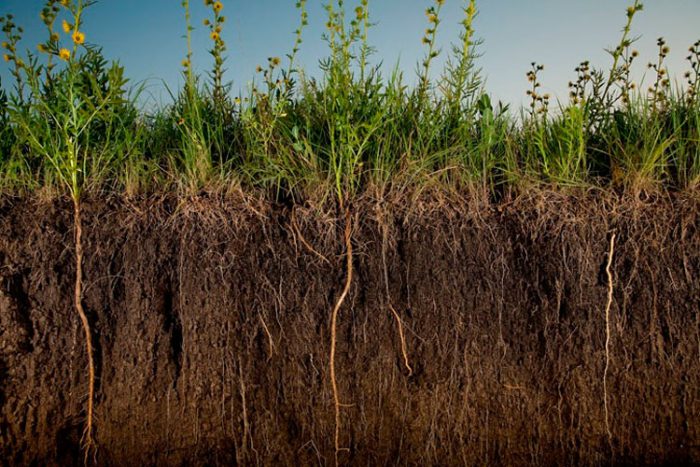
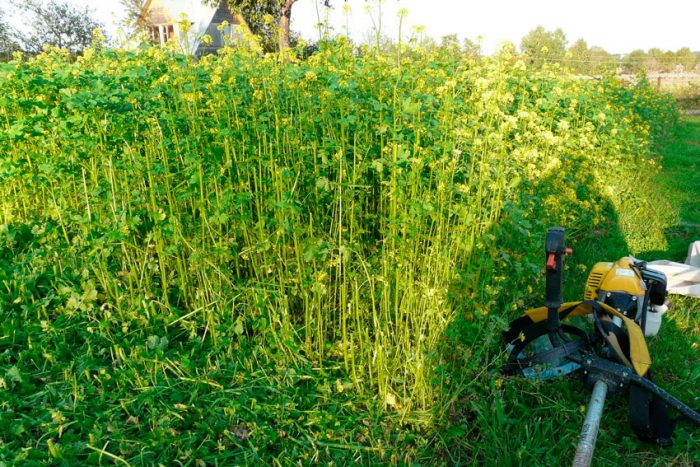
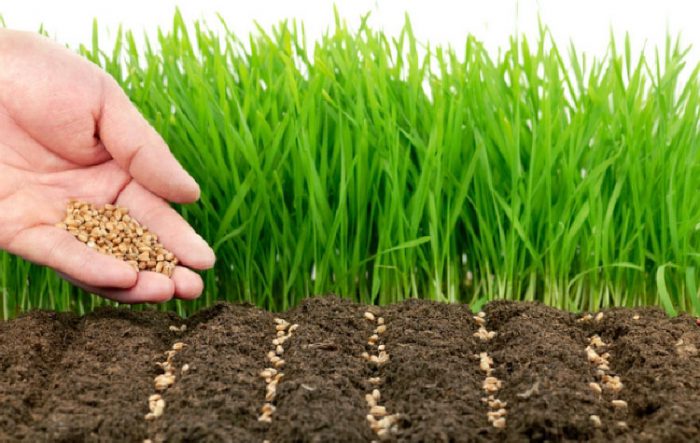

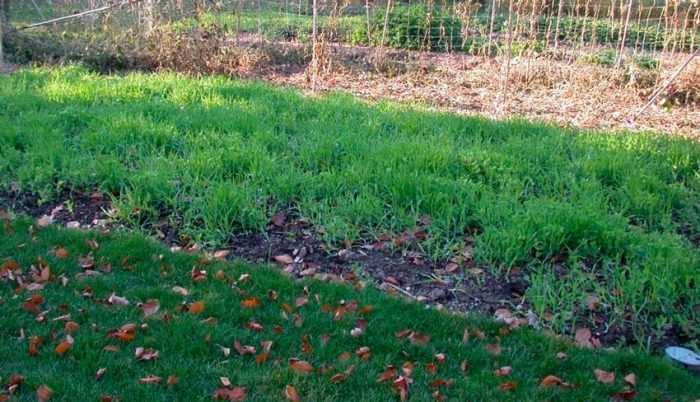
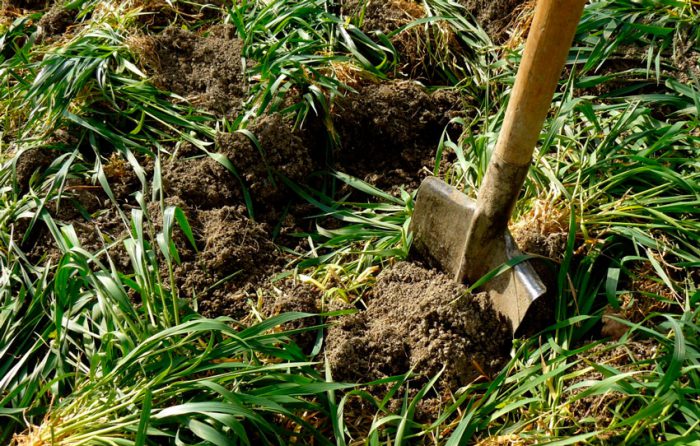
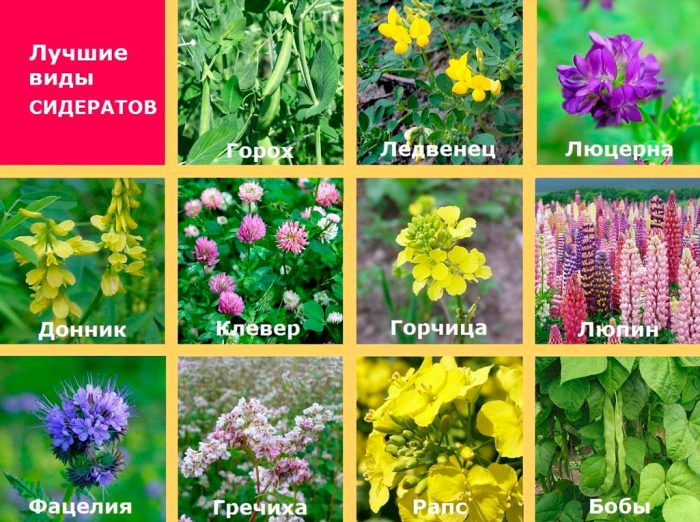

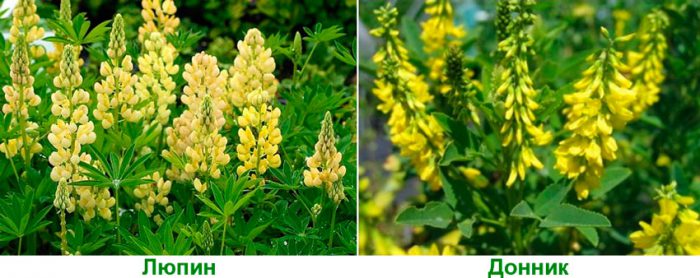
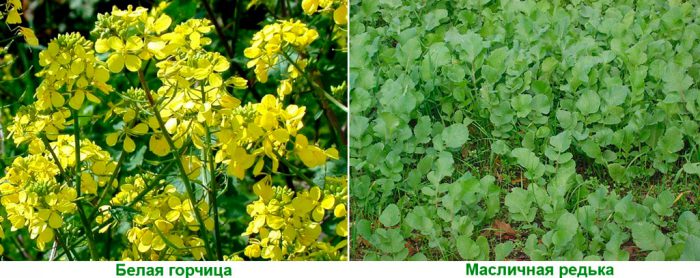
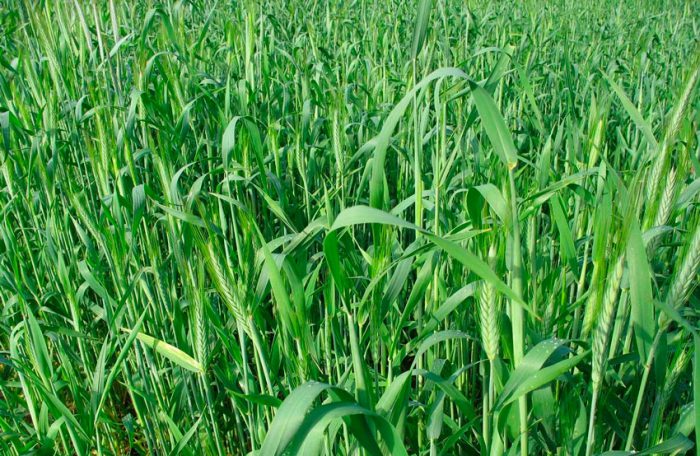

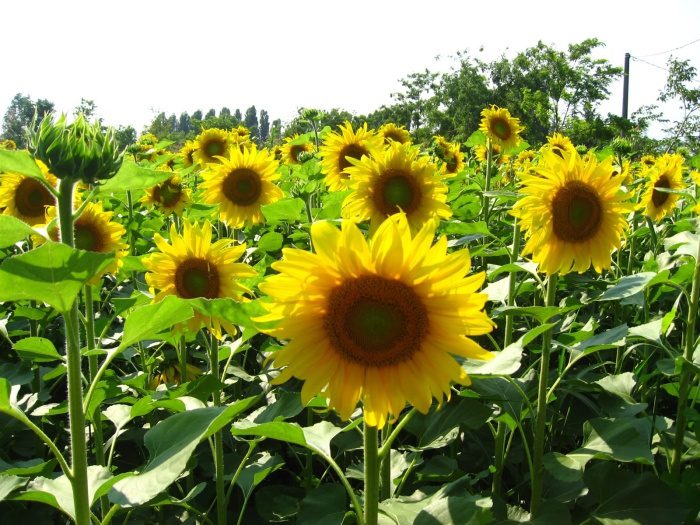
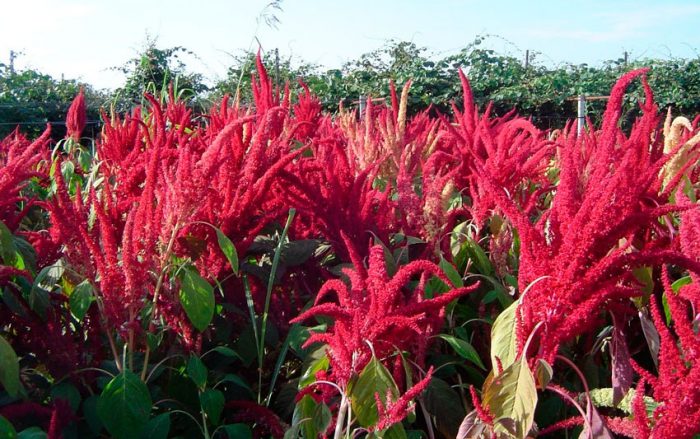
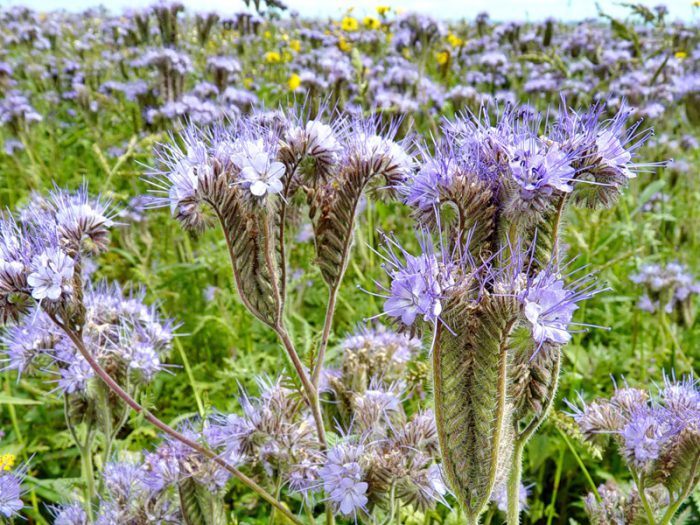

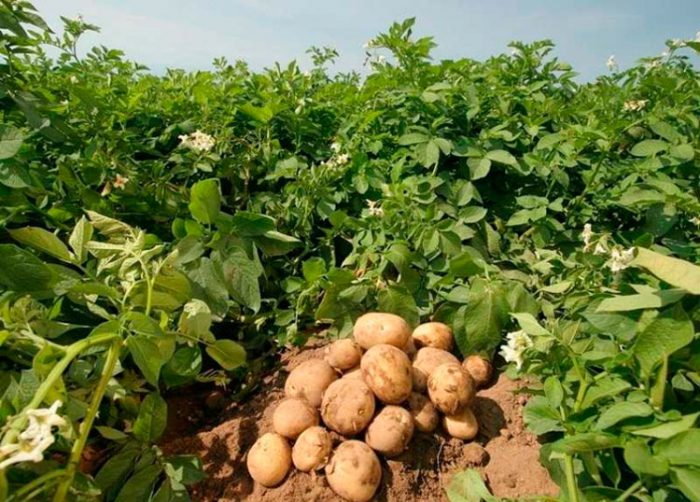


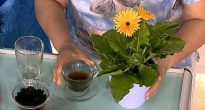


Great information. Thank you.
The material is described in detail and professionally.
Tomatoes do not grow for 2 years on the site said that late blight but looked in the internet in the pictures does not look like there are spots and I do not develop seedlings. I do not know what to do with iodine and serum and what I did not process does not help.